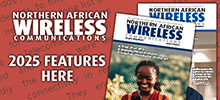11 July 2023
While WiFi penetration in Tier-I and Tier-II cities is considerably high at 74%, many consumers are falling into a WiFi exclusion trap, according to Consumer Unity and Trust Society (CUTS).
Calling the inability to benefit from a home WiFi connection, due to cost, awareness and availability constraints as a WiFi exclusion trap, the study said many consumers had been unable to install WiFi as a result.
The study comes at a time when the government is deliberating on whether to reserve the GHz spectrum band solely for mobile internet like 5G or for WiFi use. It pointed out that of those who did not have a WiFi connection at home, it was found that 63% wanted to explore the possibility of installing it.
“Although most families in rural areas had the first dimension of the digital divide, i.e. physical access to an internet-connected device, many family members, particularly women in the family did not have a material access to such devices. The study thereby recommends efforts to extract consumers from this trap,” said the report.
It also advocated for WiFi at newer bands being made available. “It can help extract those in the trap by providing more public WiFi access points, reliable and multiple connections with additional bandwidth and by leveraging potential for enhancement of income generation,” read the report.
The study also found 49% consumers preferred 6GHz over existing 5GHz and 2.4GHz, based on technical parameters of each band. Control over the 6GHz band is hotly contested by telecom service providers such as Reliance Jio and Bharti Airtel, and WiFi providers, because mid bands provide a balance between wide coverage and capacity, which is critical for the rapid and cost-efficient deployments of 5G. 6GHz is also the last remaining mid-band spectrum range where city wide coverage can be provided with mobile networks.






